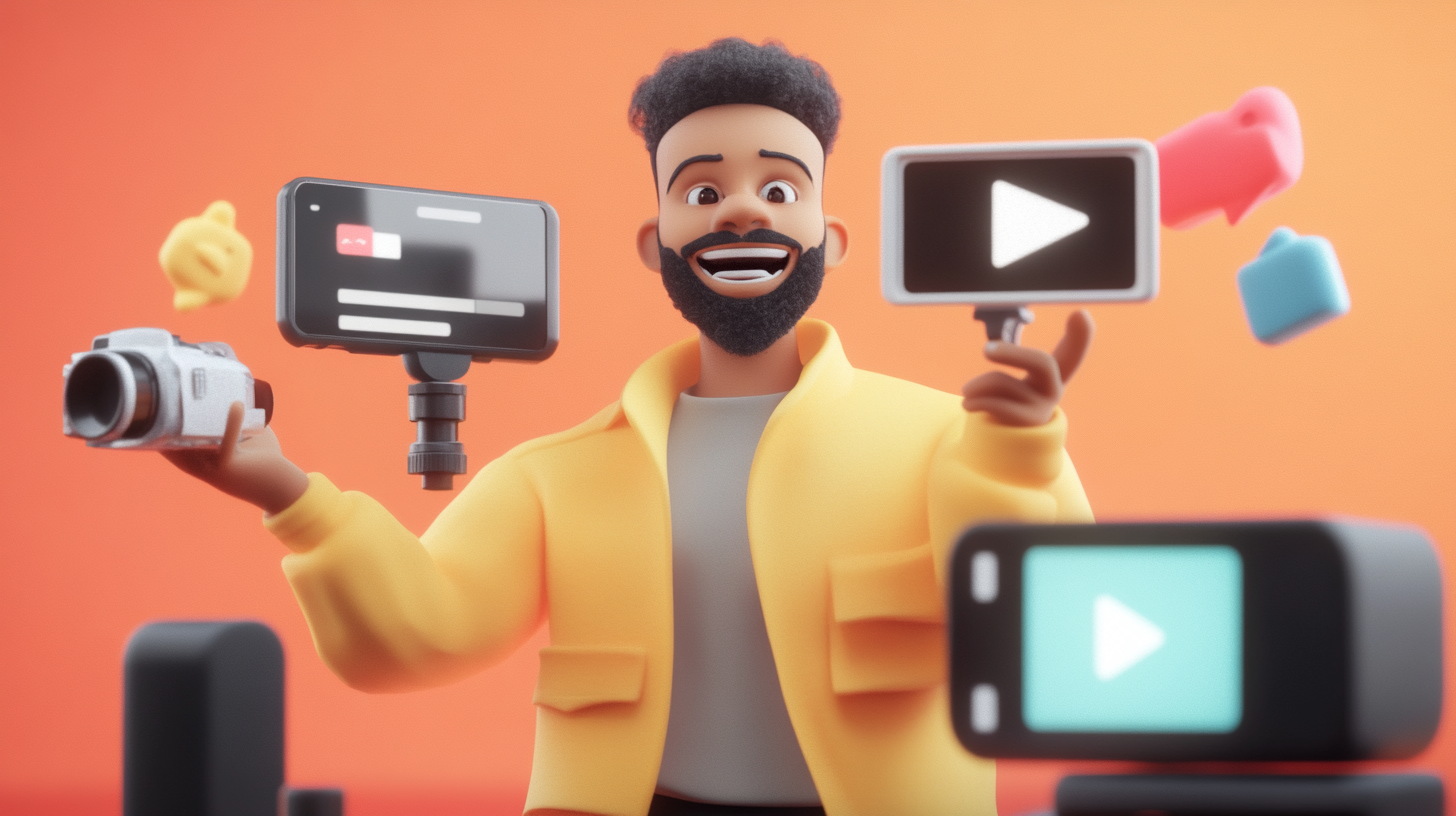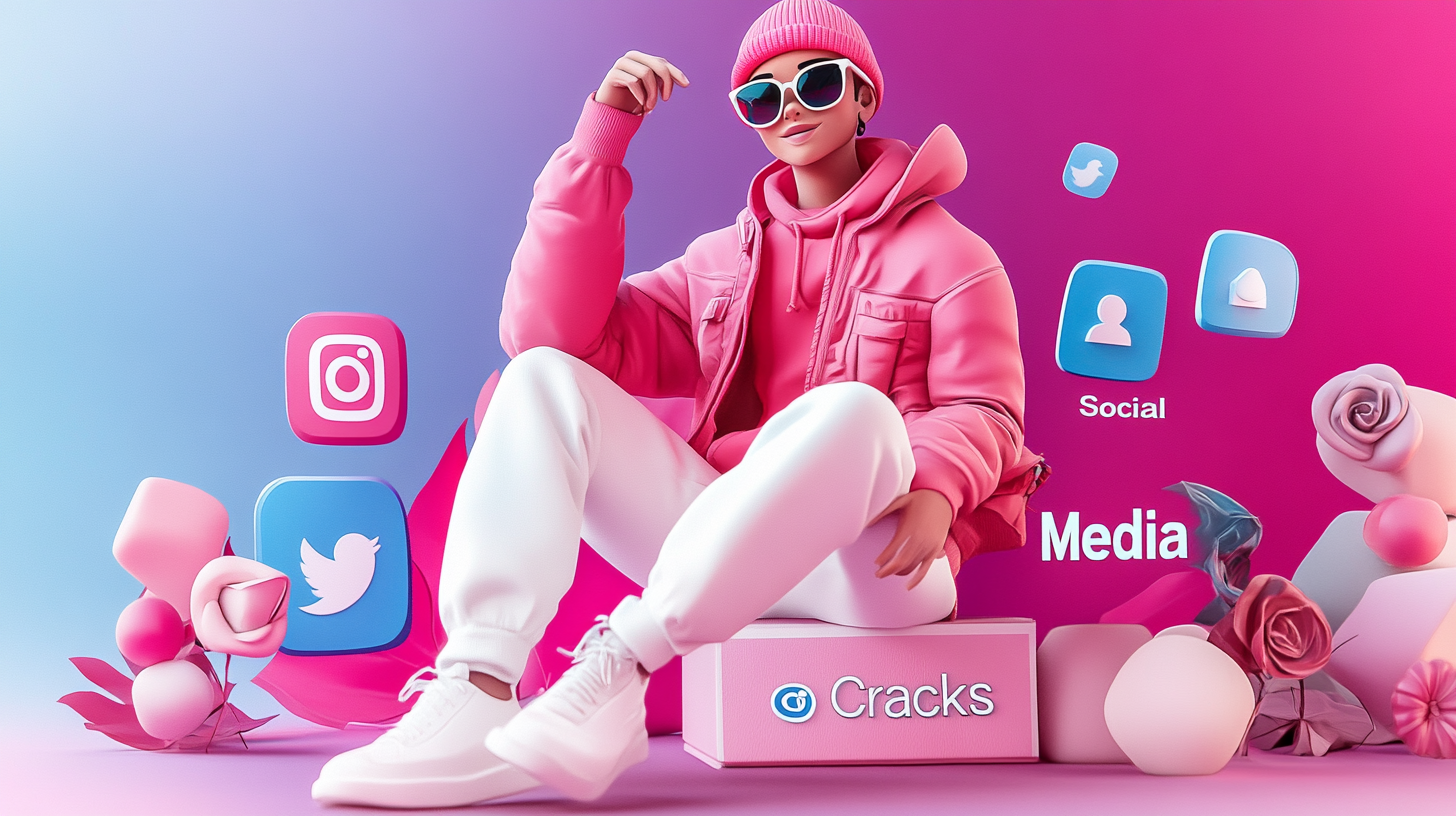Influencer Handbook: What, Why, and How
Introduction: The Rise of Influencer Marketing
In the digital landscape of 2024, influencer marketing has become a cornerstone of modern brand strategies. This comprehensive guide explores the world of influencers, their impact on marketing, and provides actionable steps for aspiring influencers.

What is an Influencer?
An influencer is a content creator who has built a reputation for their expertise in a specific niche. They leverage social media platforms to engage with their audience and often collaborate with brands to promote products or services.
| Influencer Type | Follower Count | Example |
|---|---|---|
| Nano-influencers | 1,000 - 10,000 | @healthylivingwithsarah (local fitness instructor) |
| Micro-influencers | 10,000 - 100,000 | @techreviewerjohn (gadget reviewer) |
| Macro-influencers | 100,000 - 1 million | @travelwithemily (travel blogger) |
| Mega-influencers | 1 million+ | @kimkardashian (celebrity influencer) |
Why Become an Influencer?
The allure of influencer marketing has grown exponentially. Here's why many are drawn to this career path:

- Creative Expression: Platforms like Instagram and YouTube allow influencers to showcase their creativity. For instance, beauty influencer James Charles (@jamescharles) has built a following of over 20 million by showcasing his unique makeup artistry.
- Financial Opportunities: Top influencers can earn substantial incomes. For example, lifestyle influencer Chiara Ferragni (@chiaraferragni) has reportedly earned over $8 million in a single year through brand partnerships and her own product lines.
- Networking: Influencers often connect with industry professionals and fellow creators. Tech influencer Marques Brownlee (@mkbhd) has leveraged his YouTube success to interview tech giants like Elon Musk and Bill Gates.
- Personal Brand Building: Influencing allows individuals to establish a strong personal brand. Fitness influencer Kayla Itsines (@kayla_itsines) has built a global fitness empire from her Instagram following.
- Flexibility: Many influencers enjoy a flexible work schedule. Travel influencers like Kara and Nate (@karaandnate) have turned their passion for travel into a full-time career, visiting over 100 countries while creating content.
Case Study: The Rise of a Successful Influencer
Let's examine the journey of Huda Kattan (@hudabeauty), a mega-influencer in the beauty industry:
- 2010: Started a beauty blog as a hobby
- 2012: Launched Instagram account, quickly gaining followers with makeup tutorials
- 2013: Created false eyelashes, her first product
- 2016: Expanded into a full cosmetics line, Huda Beauty
- 2024: Over 50 million Instagram followers, a billion-dollar beauty brand
Key takeaways from Huda's success:
- Consistency in content creation
- Authenticity in sharing personal experiences
- Leveraging social media trends
- Diversifying income streams (content creation, product lines, collaborations)
How to Become an Influencer: A Step-by-Step Guide
1. Choose Your Niche
The first step in becoming an influencer is identifying your niche. This should be an area where you have expertise, passion, and can provide value to your audience. Let's explore some popular niches and successful influencers within them:

| Niche | Example Influencer | Follower Count | Key Success Factors |
|---|---|---|---|
| Fashion and Beauty | Chiara Ferragni (@chiaraferragni) | 29M+ on Instagram | Unique style, high-quality visuals, brand collaborations |
| Health and Fitness | Kayla Itsines (@kayla_itsines) | 14M+ on Instagram | Effective workout programs, before/after transformations |
| Travel | Murad Osmann (@muradosmann) | 3.5M+ on Instagram | Innovative #FollowMeTo concept, stunning destinations |
| Food and Cooking | Yumna Jawad (@feelgoodfoodie) | 3.5M+ on Instagram | Easy-to-follow recipes, vibrant food photography |
| Technology | Marques Brownlee (@mkbhd) | 16M+ on YouTube | In-depth tech reviews, high production quality |
| Lifestyle | Zoella (@zoella) | 9M+ on Instagram | Relatable content, diverse product range |
| Personal Finance | Graham Stephan (@grahamstephan) | 3.5M+ on YouTube | Practical financial advice, engaging presentation style |
Remember, the more specific your niche, the easier it will be to stand out and attract a dedicated following. For instance, instead of just "travel," you could focus on "sustainable travel for budget backpackers," like Kiona (@hownottotravellikeabasicbitch) who has built a following of 450K+ by addressing social issues in travel.
2. Choose Your Platform(s)
Different platforms cater to different types of content and audiences. Here's a detailed breakdown of popular options with examples of successful influencers:
- Instagram: Ideal for visual content, particularly in fashion, beauty, and lifestyle niches.
- YouTube: Perfect for long-form video content across various niches.
- TikTok: Great for short-form, entertaining video content.
- LinkedIn: Suitable for professional and B2B influencers.
- Twitter: Ideal for news, opinions, and real-time engagement.
- Blog/Website: Provides a home base for your content and can improve your SEO.
While it's tempting to be on every platform, it's often more effective to master one or two platforms initially. For example, fashion influencer Aimee Song (@songofstyle) built her empire primarily through Instagram before expanding to YouTube and other platforms.
3. Create High-Quality Content
Content is the cornerstone of your influencer career. Here are some detailed tips for creating engaging content:
- Be Authentic: Share your genuine thoughts and experiences. Authenticity builds trust with your audience.
- Provide Value: Whether it's entertainment, education, or inspiration, ensure your content adds value to your followers' lives.
- Consistency: Maintain a regular posting schedule to keep your audience engaged.
- Visual Appeal: Invest in good equipment and learn basic editing skills to enhance the quality of your content.
- Engage with Your Audience: Respond to comments and messages to build a community around your content.
- Leverage Video Marketing: Incorporate video content to boost engagement. Video content is highly shareable and can significantly increase your reach. Consider creating a mix of long-form content for platforms like YouTube and short-form videos for TikTok or Instagram Reels. Live streaming can also be an effective way to connect with your audience in real-time. Remember to optimize your videos for mobile viewing, as most social media consumption happens on smartphones.
4. Grow Your Following
Building a substantial following takes time and effort. Here are some detailed strategies to grow your audience, with examples of influencers who've used them effectively:
- Use Relevant Hashtags: This can help your content reach users interested in your niche.
- Collaborate with Other Creators: Cross-promotion can expose you to new audiences.
- Engage with Your Community: Regularly interact with your followers and other accounts in your niche.
- Optimize Your Profile: Ensure your bio clearly communicates who you are and what value you offer.
- Leverage SEO: If you have a blog, use SEO best practices to improve your visibility in search results.
Remember, growing your following organically takes time. Focus on creating valuable content and engaging with your audience authentically. As entrepreneur and influencer Gary Vaynerchuk often says:
5. Network and Collaborate

Networking is crucial in the influencer world. Here are some effective strategies with real-world examples:
| Strategy | Example | Impact |
|---|---|---|
| Attend industry events | BeautyCon | Beauty influencer James Charles (@jamescharles) gained significant exposure at BeautyCon 2018 |
| Join online communities | Reddit r/NewTubers | Many YouTubers like Peter McKinnon (@petermckinnon) credit Reddit for early growth |
| Collaborate with peers | YouTube collaborations | David Dobrik's (@daviddobrik) collaborations helped grow his channel to 18M+ subscribers |
Pro Tip: "Collaborations are not just about growing numbers. They're about creating meaningful connections that can lead to long-term opportunities." - Lilly Singh (@iisuperwomanii), YouTuber with 14M+ subscribers
6. Understand Analytics
Mastering analytics is key to growth. Here's a breakdown of crucial metrics and how top influencers use them:

- Engagement Rate: Measures audience interaction. Fashion influencer Chiara Ferragni (@chiaraferragni) maintains a high engagement rate of 2-3% despite having 29M+ followers.
- Follower Growth: Tracks audience expansion. Fitness influencer Joe Wicks (@thebodycoach) grew from 3,000 to 3.9M+ followers during the 2020 lockdown by offering free daily workouts.
- Reach and Impressions: Shows content visibility. Travel blogger Kara and Nate (@karaandnate) use these metrics to optimize their video titles and thumbnails on YouTube.
- Click-through Rate (CTR): Indicates how often people click on your links. Tech reviewer Marques Brownlee (@mkbhd) uses CTR to refine his video titles and descriptions, contributing to his 16M+ subscriber base.
Case Study: How Huda Kattan (@hudabeauty) Used Analytics to Build a Beauty Empire
- Started tracking engagement rates on different types of content
- Noticed higher engagement on makeup tutorials
- Increased frequency of tutorial posts
- Engagement led to product ideas, resulting in a successful beauty line
- Now has 50M+ followers and a billion-dollar beauty brand
7. Monetize Your Influence

Once you've built a substantial following, explore these monetization strategies:
| Method | Example | Success Story |
|---|---|---|
| Sponsored Posts | Instagram product features | Zoe Sugg (@zoella) earns up to $14,000 per sponsored post |
| Affiliate Marketing | Amazon Associates program | Pat Flynn (@patflynn) earned $2M+ in affiliate income in 2017 |
| Creating and Selling Products | Merchandise lines | Jeffree Star (@jeffreestar) built a $100M+ cosmetics empire |
| Offering Services | Online courses | Marie Forleo's (@marieforleo) B-School program generates $8M+ annually |
| Ad Revenue | YouTube monetization | Ryan Kaji (@ryansworld) earned $26M in 2019, primarily from ads |
Expert Advice: "Don't put all your eggs in one basket. Diversify your income streams to create a sustainable influencer business."
Remember, successful monetization often comes from a combination of these methods. For instance, fitness influencer Kayla Itsines (@kayla_itsines) combines sponsored posts, her own fitness app (Sweat), and merchandise sales to generate a multi-million dollar income.
Ethical Considerations and Best Practices
As an influencer, you have a responsibility to your audience. Keep these ethical considerations in mind:
- Transparency: Always disclose sponsored content and partnerships.
- Authenticity: Only promote products or services you genuinely believe in.
- Respect Privacy: Be mindful of your audience's privacy and your own.
- Fact-Checking: Ensure the information you share is accurate, especially if you're in niches like health or finance.
Challenges of Being an Influencer
While being an influencer can be rewarding, it's important to be aware of the potential challenges:
- Burnout: Consistently creating content and engaging with followers can be exhausting.
- Criticism and Trolls: Public figures often face criticism and negative comments.
- Algorithm Changes: Social media platforms frequently update their algorithms, which can affect your reach.
- Pressure to Stay Relevant: The digital landscape evolves rapidly, requiring constant adaptation.
- Work-Life Balance: The line between personal and professional life can blur for influencers.
Conclusion: The Future of Influencer Marketing

As we look towards the future of influencer marketing, several key trends are emerging:
- Authenticity and Transparency: Consumers are increasingly valuing genuine connections. Influencers who maintain authenticity in their partnerships and are transparent about sponsored content are likely to see continued success.
- Niche Specialization: While mega-influencers will still have their place, there's a growing emphasis on micro and nano-influencers who have highly engaged audiences in specific niches. These influencers often have higher engagement rates and can offer brands more targeted reach.
- Long-term Partnerships: Brands are moving away from one-off collaborations towards long-term partnerships with influencers. This approach helps in building more credible and consistent brand associations.
- Integration of New Technologies: The use of augmented reality (AR) and virtual reality (VR) in influencer campaigns is expected to increase, offering more immersive experiences for audiences.
- Increased Regulation: As the industry matures, we can expect stricter regulations around disclosure and transparency, ensuring fair practices in influencer marketing.
To succeed in this evolving landscape, influencers should:
- Stay adaptable to platform changes and new technologies.
- Focus on building genuine connections with their audience.
- Continuously provide value through high-quality, engaging content.
- Develop strong business acumen to navigate partnerships and monetization opportunities.
Remember, the key to long-term success in influencer marketing lies in staying true to your authentic self while being ready to evolve with the industry. By focusing on creating meaningful content and fostering real connections with your audience, you can build a sustainable and impactful influencer career.